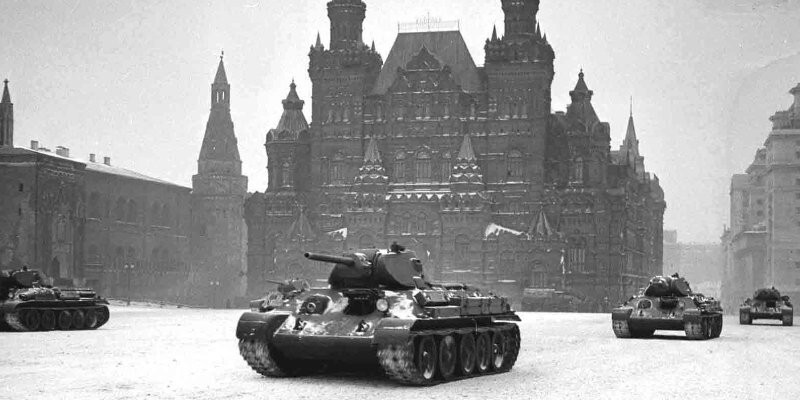Battle of Moscow
Strategy
To Hitler, capturing the Soviet capital was seen as the ultimate victory. Taking Moscow was a neccesary aspect of Operation Barbarossa, and a sign that the superpower had fallen to its knees. After the capture of Kiev, it became clear to Soviet military leaders that a Nazi advance towards Moscow was imminent. Thus, a joint frontline was ordered uniting the cities of Vyazma and Bryansk in attempt to create a buffer zone to Moscow. While initial resistance efforts were succesfull, the Blitzkreig strategy of the Germans succesfully overwhelmed Russian defense forces(Simon & Schuster 2007).
Blitzkreig
The Blitzkreig was a strategy developed by Nazi military leaders and was fundamental to their success throughout Europe and Africa. It involved surrounding enemy frontlines and rapidly advancing through them, hoping to minimize loss of life and to not allow the enemy to plan a counter. For a more nuanced explanation of the strategy, watch the video below.
Turning Tides
Though Nazi forces succesfuly made it through the initial improvised defensive fronts, the will of Soviet soldiers to fight on significantly delayed the initial timeline of the invasion set by Nazi officials. Thus, they were horribly unprepared for the infamous Russian winter, and many Nazi soldiers began suffering from the effects of frostbite. In addition, the delayed invasion meant many highly trained soldiers were able to relocate to Moscow, providing much more support than the current rag-tag team of troops. These soldiers had much better equipment as well, and their winter camo became infamous among Nazi ranks earning the nickname of The Invisible Death. Support brought by the new wave of Soviet soliders and equipment helped stifle the invasion, and drove the Nazis back 150 miles away from the capital. Hitler's strategy of invading and destroying the USSR in one feil swoop had failed miserably, and thus he was forced to reasses to plan for a longer, more drawn out war- something the Nazis were unprepared to do. Thus, Hitler turned his focus to another key source of production and a key location in southern Russia - Stalingrad(Simon & Schuster 2007).

